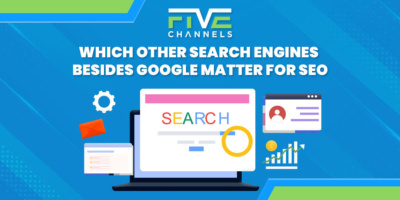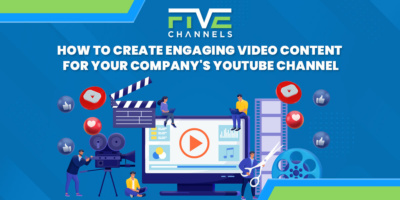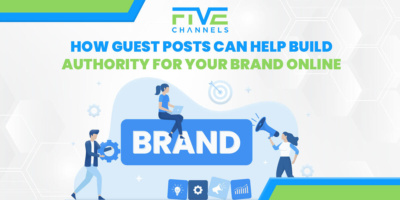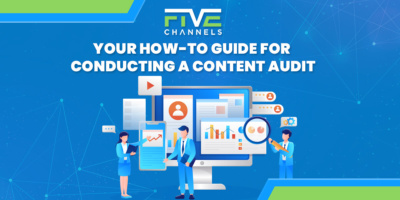Want to drop your SERPs? Want to get zero social shares? Make these 17 SEO web design mistakes.
You’ve heard SEO is important. Otherwise, you wouldn’t be here investigating it in the first place.
But just how important is it? What’s the big deal with SEO?
Well, Google accounts for over 76% of all global desktop search traffic… that’s the big deal. If you aren’t on the first couple pages for your target keywords, you can say sayonara to a huge chunk of potential leads.

Those people who didn’t find you on the first page of their search results are gonna click straight on the competition.
Why? Because it’s simply easier than finding you!
We’ve all searched for something on Google before, so you know from personal experience that you tend to click on the top page results. It’s in our nature to be lazy, and the reason Google does so well is that they’re great at putting what we’re looking for right in front of us!
SEO web design is the only way to make sure your company is being found by search engines and not getting penalized for poor practices. This will land you in the dreaded nether-regions of the third page of Google and beyond.
We’ve got you covered, so you don’t get covered by pages of other results.
These SEO web design mistakes, when avoided, will make sure you are using essential SEO strategies to help your company rank better.
Slay or be slain — here are the most important things to avoid when designing your website to make sure it’s SEO friendly.
The Top 17 SEO Web Design Mistakes to Avoid (or Get Slain by Google)
1. Broken Links
It’s great to find relevant links for your material. It’s not great to forget to update them or check for broken links.
Google algorithms check for broken or spam like links that don’t pertain to your content. And they don’t take them lightly.
They’re a big red flag to Google that you may be a spam site who doesn’t take into consideration their user experience. But that’s not you!
Because they can dramatically impact your ability to rank high in search engines, make sure to stay up-to-date on your links and which ones are active. And use relevant links on your site as well as in your backlinking strategy.
All this means is linking to content that actually has to do with what you’re talking about — cite sources that matter to your content and use internal links that make sense.
2. Outdated or No Content
SEO content writing is a great way to improve your search engine ranks. But what does content optimized for search engines look like?
 There are a few rules of thumb you can use to make sure your web content will help, not hinder, your SEO rankings:
There are a few rules of thumb you can use to make sure your web content will help, not hinder, your SEO rankings:
- Use relevant keywords in your content, strategically
- Create content that is evergreen, meaning it will still be relevant to your industry in years to come
- Update your content with relevant internal links as well as external links (as mentioned in the previous point)
- Update your content regularly and repurpose old content that performed well
All these practices, when combined, will make sure your past content, as well as future content, is helping your SEO efforts.
3. Too Many On-Page Links
While it’s important to make sure you’re using links, too many can also be a red flag for Google that you may be a spam site.
Use them where they’re relevant, make sense, and stick to a couple every 500 words or so.
Otherwise, Google’s Penguin algorithm will spot them. It’s specifically designed to find low-quality links and drop pages that score poorly.
4. Hard to Find Content
Don’t make a bunch of useful content, then bury it in the farthest reaches of your site. Submit your new pages to Google and share them across your social media platforms.
Not only will this raise awareness of your brand and help you gain industry authority, but the more shares and visit you get the higher you’ll rank for being desirable content.
5. Competing Categories
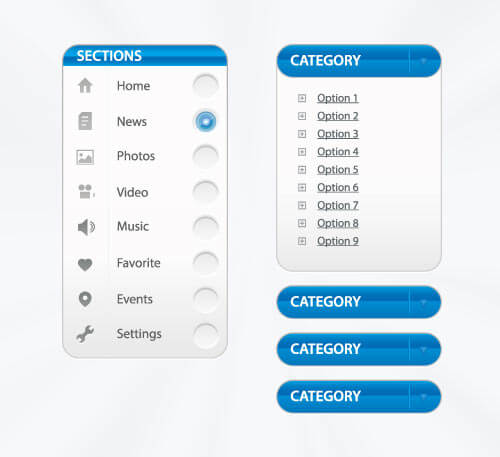 This SEO web design tip to avoid has the same theme as the last — making your content visible.
This SEO web design tip to avoid has the same theme as the last — making your content visible.
Your site needs to have a user-friendly experience so your relevant content can be found. This means clearly marked categories that funnel the reader exactly to where they want to go.
Make sure your primary menu bar makes sense. Think about building your site from a potential clients perspective, not your own.
Get inside your personas head so they can navigate your content better. Not only that but understanding your target persona will allow you to create content that caters better to your audience. Give the people what they want!
You’ll reap the rewards in your rankings.
6. Recurring Low Word Counts
Google punishes thin content — anything under 200 words is considered skimpy and a red flag.
So bulk up your stuff. You know what you’re talking about. Educate your readers and make it your mission to provide in-depth, informative articles.
This SEO web design tactic will not only brand you as an industry authority and great resource for potential clients, it will boost you up the search engine ranks!
It makes sense when you think about it. When you search online, you want the best articles to pop up. Ones that answer all your questions.
Google strives to get those results on the first page. So the better you answer questions and provide informative material, the more Google will give you a boost.
7. Poor Site Search Tools
It’s just as important to be found on search engine results as it is for people to be able to find what they want on your actual site.
Have a good search tool. Don’t just slap a free plugin on your site and hope for the best. Make sure when people want to find specific content on your site, they can type relevant words in a search bar and find exactly what they’re looking for.
This SEO web design practice makes sure you are a consistently easy-to-use resource for your clients. They don’t want to hunt down that article they want to share — so make sure they can find it easily.
 8. Keyword Stuffing
8. Keyword Stuffing
Google penalties, like the Panda algorithm update, specifically target the overuse of keywords.
What does that mean?
It means it’s important to get your keywords on the page… but not to use too many. They shouldn’t be stuffed in every chance you get.
You’ve read articles like that before, where every other word is clearly being framed around a keyword. That tactic may have worked a long time ago, but Google is getting smarter. So should you.
9. Using Headings Improperly
When your content gets crawled, headings are an important factor in how it gets categorized. Generally speaking, using H1 headings multiple times throughout content is a big no-no.
Keywords should also be strategically used in your headings and subheadings. They’re a large indicator of what your article is about, allowing search engines to rank them appropriately.
10. Forgetting to Funnel
You have to use SEO web design practices to make sure people stay on your page.
The fact is, 55% of people will leave if you don’t get their attention in the first 15 seconds. That’s over half of your potential leads walking away if they can’t figure out what you’re all about in seconds.
So, you have to be smart. Don’t forget to consider your marketing funnel when creating your user-friendly SEO web design. Be clear, concise, and have strong CTA’s in all the right places.
This makes it obvious to your readers, and Google, exactly what your site is all about.
11. Never Showcasing New Information
When you speak to your clients, create a promotion, or brainstorm your marketing campaign, one thing is always clear: it’s important to highlight your company’s latest and greatest.
Why wouldn’t you do this for your content, too?
It only makes sense. When you have something great to share, share it!
A site that is constantly updated has a better SEO web design strategy than a forever static competitor. It gives Google more to crawl regularly. It’s a great way to show search engines that you are constantly updating and looking to provide relevant material.
 12. Not Adding Value
12. Not Adding Value
More important than having constantly updated content? Having updated relevant content.
Add value to your reader’s lives. Know your target audience. Provide them with answers to questions they’re asking.
This is the best SEO web design rule you can abide by. By consistently providing value, you show Google that you’re a resource your clients want to find.
Plan your content accordingly. Make sure every piece has a reason for being there and is something your clients would want to see.
13. Too Many Action Requests
So we’ve addressed that your site needs a ton of valuable, current, in-depth content to be at the top of the search engine ranks.
But a lot of material all on one site can be, well, hard to navigate.
It’s equally important in your SEO web design to make sure your content is well laid out.
Categories, sub-categories and a user-flow are important. Don’t provide too many call-to-actions on each page. Pick one or two relevant internal links that make sense for where your user is in the marketing funnel.
14. Ignoring Mobile
You just can’t get away with ignoring the mobile world in SEO web design anymore.
52% of users would consider not engaging with a company because of a bad mobile experience. That means your competitor who has a smartphone optimized site could be taking over half your leads!
We live in a world of quick gratification. People have the ability to search for answers right in their pocket. Make sure they’re finding you for the answers by optimizing for mobile.
15. Not Optimizing for Your Audience
More important than optimizing for smartphones is optimizing for who is using them to look for your company.
What’s your target persona? Young? Old? Funky? Conservative?
Your SEO web design strategy has to take this into consideration. People are opinionated and they want to find information that uses their tone and mindset when conveying answers to their questions.
Don’t miss the mark. Make sure you cater to your audience in both tone and design to get more social shares and better rankings.
16. Missing Alt Attributes
 Your images are important to your SEO web design. Have you heard of alt attributes?
Your images are important to your SEO web design. Have you heard of alt attributes?
If you haven’t, it’s time to get with it. They’re vital in helping boost your search engine rankings.
That being said, they shouldn’t be stuffed with keywords (just like your other content!). They’re meant to be used for traffic viewing your site without images, where alt attribute text would display instead.
So they should describe the image so the user experience won’t be inhibited, even if the picture is there. But in doing so, they should also use relevant words that will help improve your rank for topics you want to rank for.
17. Duplicate Content Issues
Ya, ya, content is king. But no one wants to read the same stuff over and over again. That’s close to the definition of insanity.
While repurposing content is a strong SEO web design strategy, it needs to be done right. This means not just reposting a piece of content because it did well and brought in some conversions.
Get creative. Make an infographic, video series, or some other form of crafty content to take a powerful piece and squeeze more use out of it.
This is a great SEO web design strategy because it allows you to re-use your best stuff without being boring and repetitive. People don’t want that, search engines don’t want that, so you don’t want that.
Time to SEO, Yo
SEO web design can seem intimidating… but it’s really about following best practices and trusting the process.
Follow our seventeen no-nos to make sure you are optimizing your SEO web design and discover how quickly Google rewards good behavior.
What it really boils down to is being a valuable resource and not inundating your audience with spam. So before you start creating an aggressive strategy that doesn’t have your user in mind, think twice. You’re actually likely to get punished in the end.
Don’t have time to sort it all out yourself? We get it — while SEO web design may seem straight forward, there are a ton of little things that add up to get you ranking above the competition. Get help with your digital marketing today and experience the power of the best SEO practices.
Owner and Chief Marketing Officer, Jason Hall, and his team specialize in creating brand awareness / traffic and lead generation / marketing funnel and conversion optimization, while utilizing the appropriate marketing channels available within your industry. With diverse clients throughout the world, Jason's team is well connected within many industries to assist with your marketing strategies. With no long term contracts and various levels of service, Jason's team will increase the quality of your online traffic, leads, and sales.
About the author...
Located in the heart of the Emerald Coast - Destin, FL, founder and Chief Marketing Officer, Jason Hall, and his team specialize in creating brand awareness / traffic and lead generation / marketing funnel and conversion optimization / and PR campaigns, while utilizing the appropriate marketing channels available within your industry.
With diverse clients throughout the world, Jason's team is well connected within many industries to assist with your marketing strategies. With no long term contracts and various levels of service, Jason's team will increase the quality of your online traffic, leads, and sales.




